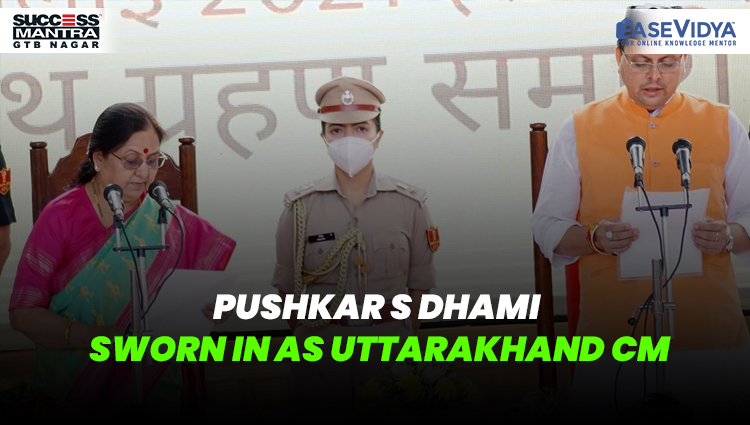
PUSHKAR S DHAMI SWORN IN AS UTTARAKHAND CM
PUSHKAR S. DHAMI SWORN IN AS UTTARAKHAND CM
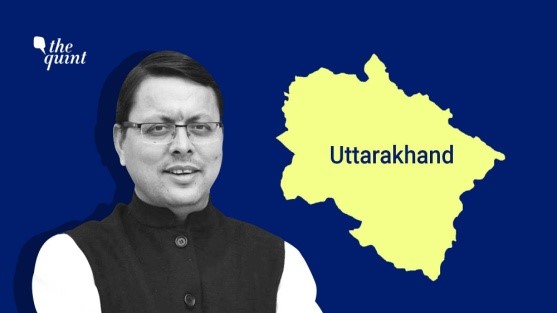
Pushkar Singh Dhami was sworn-in as the 11th Chief Minister of Uttarakhand at a programme in Raj Bhawan, Dehradun. He replaced Tirath Singh Rawat, who resigned as the Uttarakhand Chief Minister on July 2, 2021. Seven new state cabinet ministers also took the oath of office including Bishan Singh Chuphal, Subodh Uniyal, Arvind Pandey, Ganesh Joshi, Dhan Singh Rawat, Rekha Arya, and Yatishwaranand.
KEY HIGHLIGHTS RELATED TO THE ISSUE
Pushkar Singh Dhami was elected as the Uttarakhand BJP legislature party leader. He was chosen as the new Chief Minister of the state after a BJP legislature party meets on July 3, 2021 in Dehradun. Union Minister Narendra Singh Tomar, who was the central observer for the meeting of MLAs, said, "During the Legislature Party meeting, it was decided to appoint Pushkar Dhami as Uttarakhand BJP legislature party leader. We went to the Governor to discuss the party's decision."
WHO IS PUSHKAR SINGH DHAMI?
Pushkar Singh Dhami is a member of the Uttarakhand Legislative Assembly from the Khatima constituency in Udham Singh Nagar district. He has become the youngest Chief Minister of Uttarakhand at the age of 45 years. He is also the third chief minister of the state in nearly four months. Pushkar Singh Dhami began his political career in 1990 with the student wing of the Rashtriya Swayamsevak Sangh-Akhil Bharatiya Vidyarthi Parishad (ABVP). He has previously served as the state president of the Bharatiya Janata Yuva Morcha till 2008. He has also worked as a political adviser to former Uttarakhand Chief Minister Bhagat Singh Koshyari. He hails from Harkhola in Pithoragarh district of Uttarakhand. He has graduated in Human resource management and industrial relations from Lucknow University.
UTTARAKHAND CM TIRATH SINGH RAWAT RESIGNS
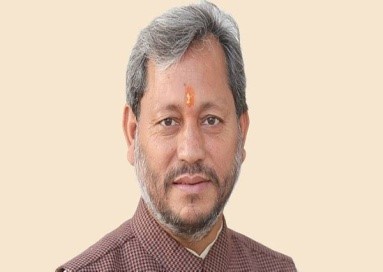
Uttarakhand CM Tirath Singh Rawat submitted his resignation to Governor Baby Rani Maurya in the evening on July 2, 2021. The Lok Sabha MP from Pauri Garhwal had taken over as the Chief Minister of Uttarakhand on March 10, 2021. Tirath Singh Rawat in his statement said, “Given the constitutional crisis, I felt it was right to resign.” Under the Indian constitution, Tirath Singh Rawat had to be elected to the state assembly within six months to continue as the Chief Minister of the state since he was not an MLA. Article 164 (4) of the Constitution states, “A minister who for any period of six consecutive months is not a member of the legislature of the state shall at the expiration of that period cease to be a minister.” Tirath Singh Rawat six months time to be elected to the Uttarakhand Legislative Assembly expires on September 10, 2021 and the chances of holding a byelection are very unlikely because of the COVID-19 pandemic. Also, according to the Representation of the People Act, there cannot be byelections in case the term of the house is less than a year. Uttarakhand is scheduled to go to by-polls next year. Hence, Tirath Singh Rawat's resignation was the most viable alternative to avert a constitutional crisis. Tirath Singh Rawat has become the first Chief Minister of Uttarakhand who could not present himself before the Legislative Assembly.
CHIEF MINISTER IN INDIAN CONSTITUTION
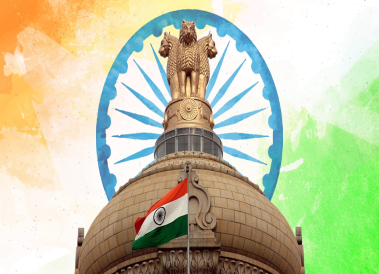
Appointment: Article 164 of the Constitution envisages that the Chief Minister shall be appointed by the governor. A leader of the party that has got the majority share of votes in the assembly elections, is appointed as the Chief Minister of the state. The Governor is the nominal executive authority, but real executive authority rests with the Chief Minister. However, the discretionary powers enjoyed by the governor reduce to some extent the power, authority, influence, prestige and role of the Chief Minister in the state administration. A person who is not a member of the state legislature can be appointed as Chief Minister for six months, within which time, he should be elected to the state legislature, failing which he ceases to be the Chief Minister.
Term of the CM: The term of the Chief Minister is not fixed and he holds office during the pleasure of the governor. He cannot be dismissed by the governor as long as he enjoys the majority support in the legislative assembly. The State Legislative Assembly can also remove him by passing a vote of no-confidence against him.
POWERS AND FUNCTIONS OF CM
- With Respect to Council of Ministers: The governor appoints only those persons as ministers who are recommended by the Chief Minister. He allocates and reshuffles the portfolios among ministers. He can bring about the collapse of the council of ministers by resigning from office, since the Chief Minister is the head of the council of ministers.
- With Respect to Governor: Under Article 167 of the Constitution, the Chief Minister acts as a link between the Governor and state council of ministers. CM advises the Governor regarding the appointment of important officials like advocate general, chairman and members of the State Public Service Commission, State Election Commission, etc.
- With Respect to State Legislature: All the policies are announced by him on the floor of the house. He recommends dissolution of legislative assembly to the Governor.
- Other Functions: He is the chairman of the State Planning Board. He acts as a vice-chairman of the concerned zonal council by rotation, holding office for a period of one year at a time. He is a member of the Inter-State Council and the Governing Council of NITI Aayog, both headed by the prime minister. He is the chief spokesman of the state government. He is the crisis manager-in-chief at the political level during emergencies. As a leader of the state, he meets various sections of the people and receives memoranda from them regarding their problems, and so on. He is the political head of the services.
TEST YOURSELF
Q.1 Recently, which of the following Indian politicians have been appointed as the 11th CM of Uttarakhand?
- Tirath Singh Rawat
- Bhuwan Chandra Khanduri
- Pushkar Singh Dhami: ANSWER
- None of the following
Q.2 Consider the given statements & state which of the following is/are incorrect in the reference to the Chief Minister of Indian states?
- There is no special provision for the appointment and election of the Chief Minister in the constitution.
- Article 154 states that the Governor will appoint the Chief Minister: ANSWER
- The Governor is free to appoint any person as Chief Minister.
- There is no such system in the Constitution that the Chief Minister should prove a majority before his appointment.
Q.3 From the following given options, which of the following posts does the Chief Ministers hold?
- Chairman of the State Planning Board
- Member of National Development Council
- Chief Spokesperson of the State Government
- All of the above
Q.4 After Considering the given option, state which of the following is not matched correctly?
- Article 167: Duties of the Chief Minister
- Article 163: sworn in of the Chief Minister: ANSWER
- Article 164: Provisions related to State Ministers
- Article 166: Operations by the State Government
Q.5 Which of the following statements is/are incorrect regarding the power & functions of the Chief Minister?
- The Chief Minister appoints judges of the state's high court: ANSWER
- The Governor appoints ministers only to those people who are recommended by the Chief Minister.
- The Chief Minister shifts all the ministers' departments.
- The Chief Minister can ask the governor to disassociate the Legislative assembly.











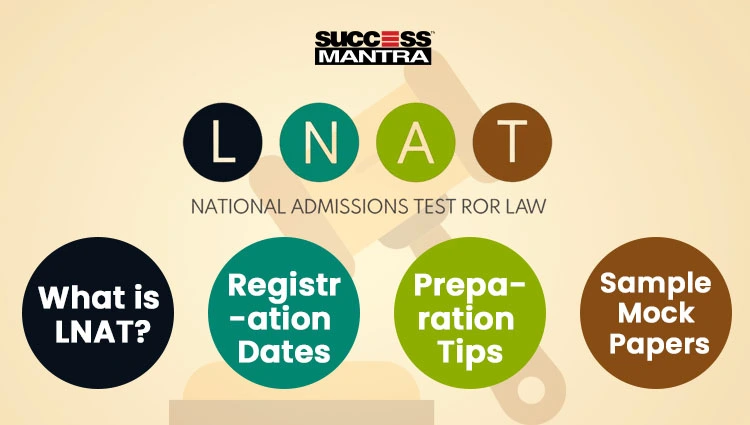

0 Comment